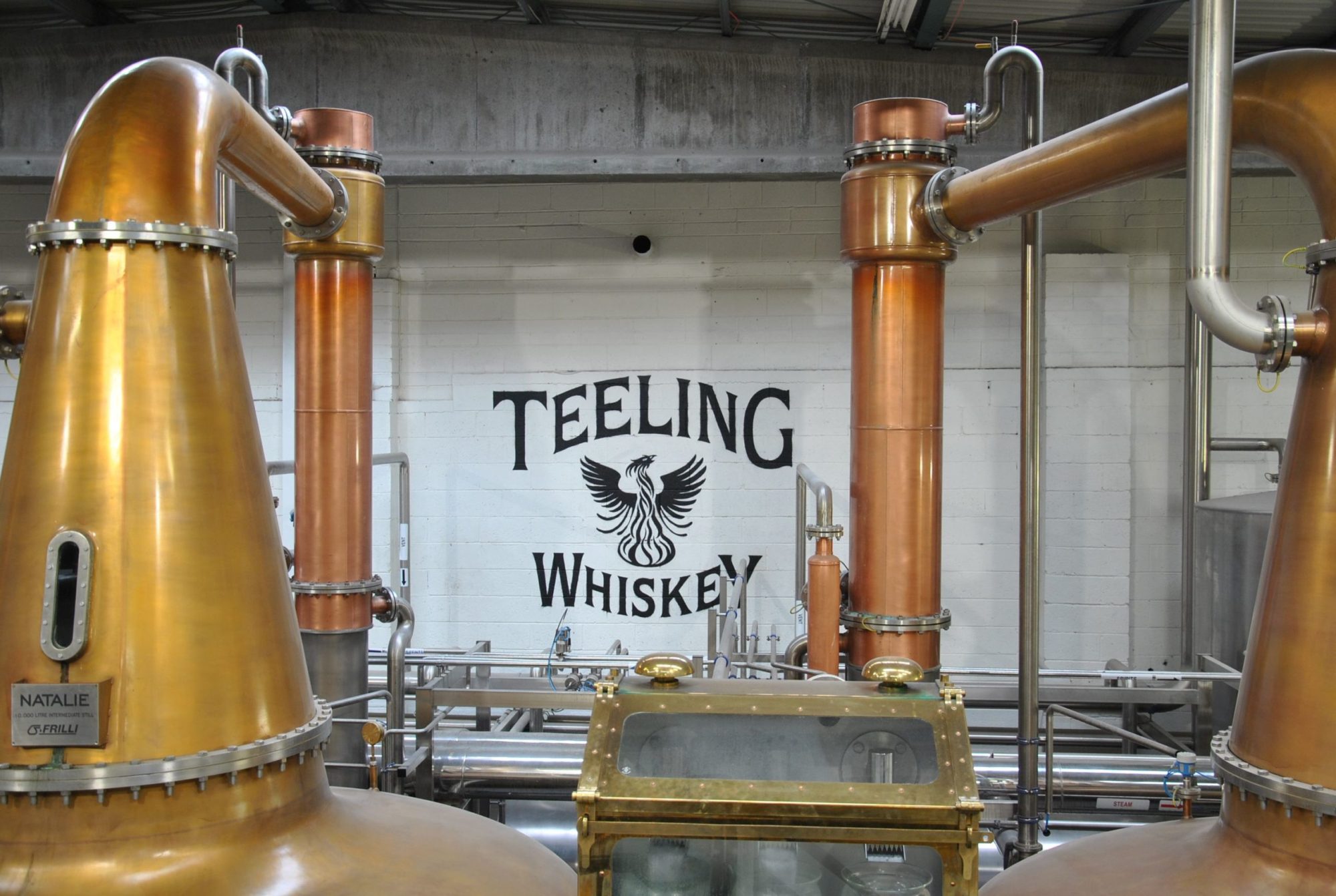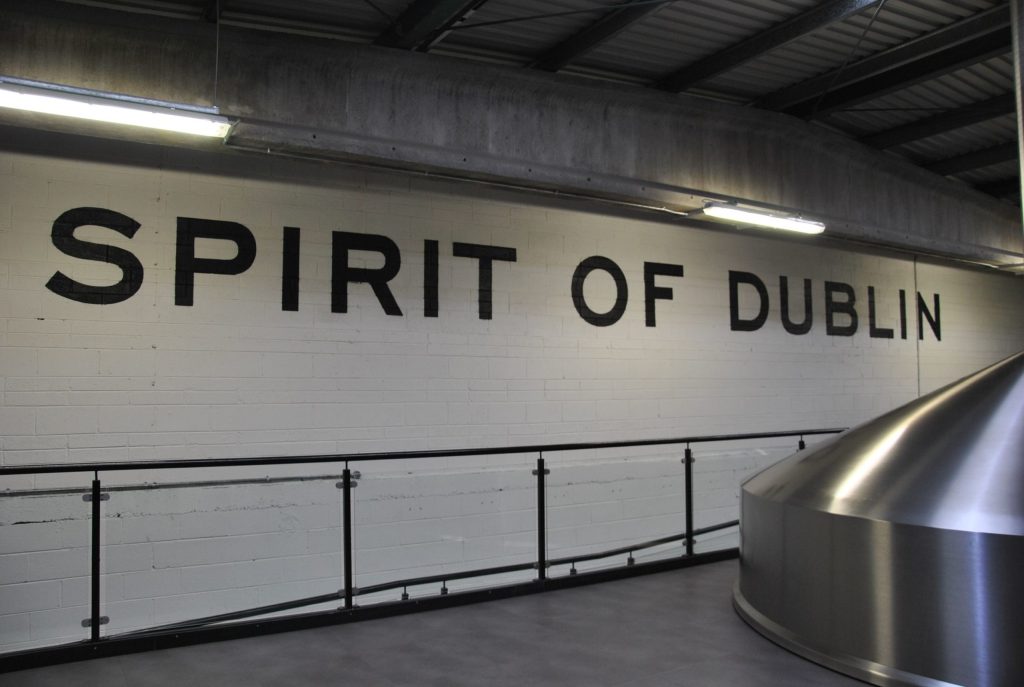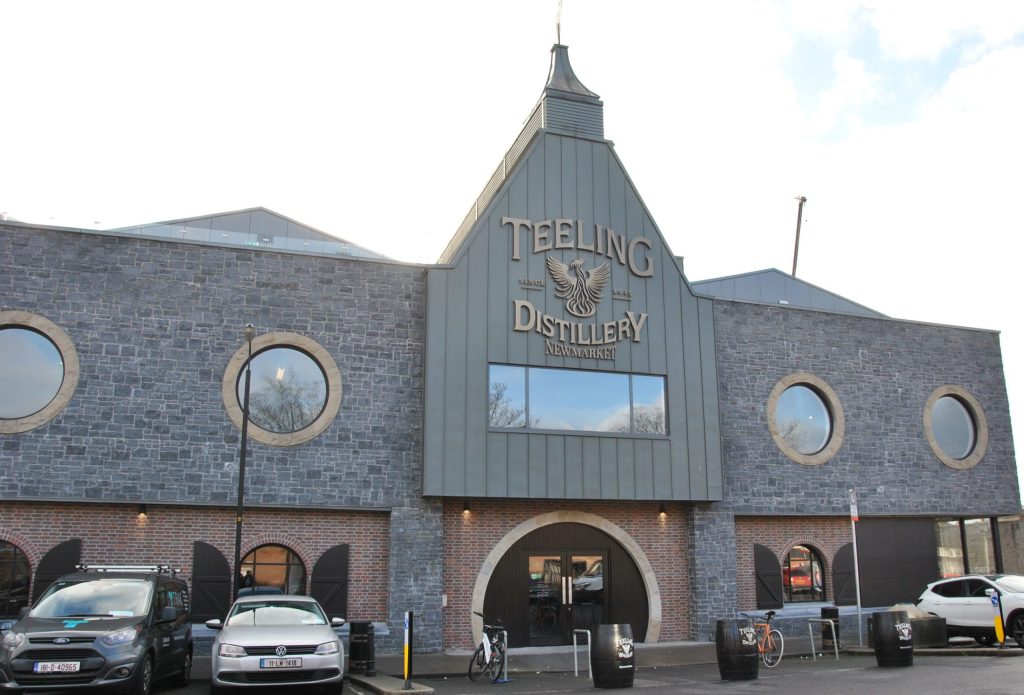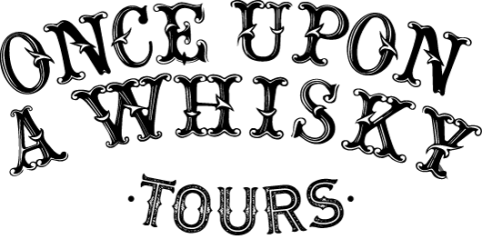Irish Whiskey | Celebrating St Patrick’s Day

A look at the wonders of Irish whiskey to celebrate St Patrick’s Day
We are quickly approaching that time of the year which gives thousands of people around the world the chance and excuse to dress up with their best green outfits and celebrate Irish culture: Saint Patrick’s Day is not far!
Falling on March 17, the day commemorates Saint Patrick, the patron saint of Ireland, and celebrates the heritage and culture of the Irish in general.
For the occasion, let’s take a dip into the wonders the Emerald Isle offers in terms of the water of life.
A bit of history first…

Teeling Distillery, Dublin – Picture: Federica Stefani
A heated debate revolving around the birthplace of whisk(e)y has seen for a very long time Scotland and Ireland contending for the prestigious title. However, it would seem that according to the latest evidence, it is in Ireland that we find the first written records of whiskey – or better, aqua vitae (uisge beatha in Gaelic) – being enjoyed (more or less) as a drink, more exactly in The Annals of Clonmacnoise, a lost Irish chronicle dating back to 1405. In the Annals, a clan leader is reported to have met his faith after ‘a surfeit of aqua vitae, to that man aqua mortis’. However, distilling had been around for a long while (probably starting in the 12th century), with Irish monks converting the skill of distilling liquids to create perfumes, to produce one of the most beloved drinks of the country.
Whiskey distilling saw a rising success: homemade whiskey was very popular and became one of the main drinks of choice, being predominantly made using malted remains from crops.
In the 17th century, producing whiskey without a licence (and therefore, paying taxes) was made illegal. This however didn’t stop many families who kept on producing from their easy-to-hide small pot stills, or Poitín (which gives the name to the Irish moonshine).
Registered distillers themselves had their creative way of dodging taxes by mixing unmalted barley (non-taxable) with malted barley, a practice that shaped the character of Irish whiskey throughout the decades.
The success of Irish whiskey kept on growing, boasting 88 licensed distilleries at its peak at the end of the 19th century. Back then, Ireland was the world-leading producer, and Dublin was at the centre of the production world.
A downward turn
The turn of the century came with many struggles: first with the start of World War I, then the war came home with the independence movements culminating in the Irish War of independence taking their toll on the country’s economy, whiskey included. On the other side of the Atlantic, prohibition also meant that an important market for Irish whiskey closed its doors.
Finally, the column still patented in 1830 by Aeneas Coffey (an Irishmen himself) made the production of grain whisky much more efficient and it set the foundations for the incredible success of blended whiskeys. Whereas Scotch producers seized the opportunity to present the world with a more palatable product, the Irish scene didn’t quite invest as much in this new trend. The scene in the mid-20th century was dire: Old Bushmills Distillery in County Antrim and Midleton Distillery in Cork, who merged under the Irish Distillers Ltd, were the only malt distilleries left, and one of its most famous brands, Jamesons, had moved from the Dublin premises (now a museum) in 1975.
A bright future ahead

Louise McGuane, Founder at J.J Corry – Picture: jjcorry.com
Thankfully, there is a happy turn at this point. In the 80s, a revival of Irish whiskey began, with old distilleries reopening and investing in innovation and experimentation (the first one to reopen was Cooley in 1987), and new ones popping up.
A big push came in the last decade: from just four distilleries opened in 2013, there are now 18 distilleries in Ireland with many more planned.
Today, Irish whiskey is one of the fastest-growing spirits categories on the global market.
A special dram
Irish whiskey has its peculiarities and rules. First of all, we should remark that the spelling used is whiskey, which was introduced to differentiate it from Scotch whisky back in the days of an old rivalry.
According to the latest regulations, Irish Whiskey must be produced with saccharified barley, fermented with yeast and matured in wooden casks (which allows the use of casks other than oak) on the island of Ireland, for a minimum of three years. It must also be distilled at less than 94.8% ABV.
Irish whiskey is also traditionally triple distilled: this gives the spirit a smoother and lighter character if compared with double-distilled Scotch.
A typical expression of Irish whiskey is Pot Still Irish whiskey: this type of spirit is made using a mixture of unmalted (green) barley and malted barley (at least 30% each plus up to 5% of other cereals, such as oats and rye), a recipe coming from the days of tax-dodging. The green barley typically gives a more oily and spicy character to the spirit must contain malted and unmalted barley.
Other types of Irish whiskey are Malt Irish Whiskey, which is made from a mash of 100% malted barley, Grain Irish Whiskey, which is produced using whole unmalted cereals (usually maize, wheat or barley) and, finally, Blended Irish Whiskey, a blend of two or more of the above styles, (all the components must be produced in Ireland)
The brands

Teeling Distillery, Dublin – Picture: Federica Stefani
New Midleton Distillery is the home to seven different brands of whisky from Redbreast to Green Spot, this distillery is a chameleon in that it’s able to use a variety of recipes and techniques, from triple pot still to column distillation, and using a variety of grains. Jameson is probably the most well-known name globally, and its success has supported the re-birth of the Irish whisky scene. It is produced at New Midleton Distillery in Cork, and the brand could adapt and re-invent itself, with collaborations and expressions (such as Jameson Cask-mates).
Old Bushmills Distillery, in Northern Ireland, is the old-guard stalwart and the oldest working whisky producer in the world. A visit here is a bit of a pilgrimage for whisky enthusiasts (and not only as it lies very close to the stunning Giant’s Causeway).
The second biggest Irish whiskey brand after Jameson, Tullamore D.E.W.’s history goes back to 1829. Production came to a halt in the 50s, when the distillery closed. Irish Distillers managed to keep the brand alive until it was purchased in 2010 by William Grant & Sons and a new distillery for the brand was built in 2014.
Cooley Distillery was the first of the new kids on the block and started out making things a bit differently. They used double distillation for their brands, such as Tyrconnell, experimented with casks and maybe most notably, they produce one of the very few peated malts on the Irish Scene, Connemara.

Teeling Distillery, Dublin – Picture: Federica Stefani
One of the newest and exciting ventures is probably Teeling Distillery. Bringing back whisky production to the heart of Dublin, Teeling started its path as an independent bottler and eventually a distillery was launched in 2015. Today they focus on small batch production and experimentation. The new generation of Teelings takes from a successful distilling past: the old Teeling distillery set up by Walter Teeling in the Liberties district of Dublin in 182 and his descendant, John Teeling, was the founder of Cooley Distillery (sold to Beam Suntory in 2011).
The Liberties district also saw a major revamp of old premises, with the launch of the Dublin Liberties Distillery and visitor experience in 2019.
Another very interesting new producer is Waterford Distillery, in the south: they focus deeply on terroir and using locally-grown barley. Their founder is former Bruighladdish co-owner, Mark Reynier, and the premises are a converted brewery which used to produce…well…Guinness! A range of Single Farm Origin single malt whiskeys, which debuted in 2020.
Other new ventures to keep an eye on are: Dingle Whiskey Distillery, which was set up in 2012, Pearse Lyons Distillery, Roe & Co Distillery (both in Dublin) and Sliabh Liag Distillers in Donegal.
And the surge is not only in new distilleries: new independent bottlers like W.D. O’Connell Whiskey Merchants and Irish whiskey bonders like J.J. Corry are also a vital part of this revival.
All contributing to make the scene of Irish whiskey the more exciting.
Now, if you are thirsty to know more about Irish Whiskey, why not join our special Irish Whiskey virtual tasting? You can find out more about the drams here.
Slainte!
